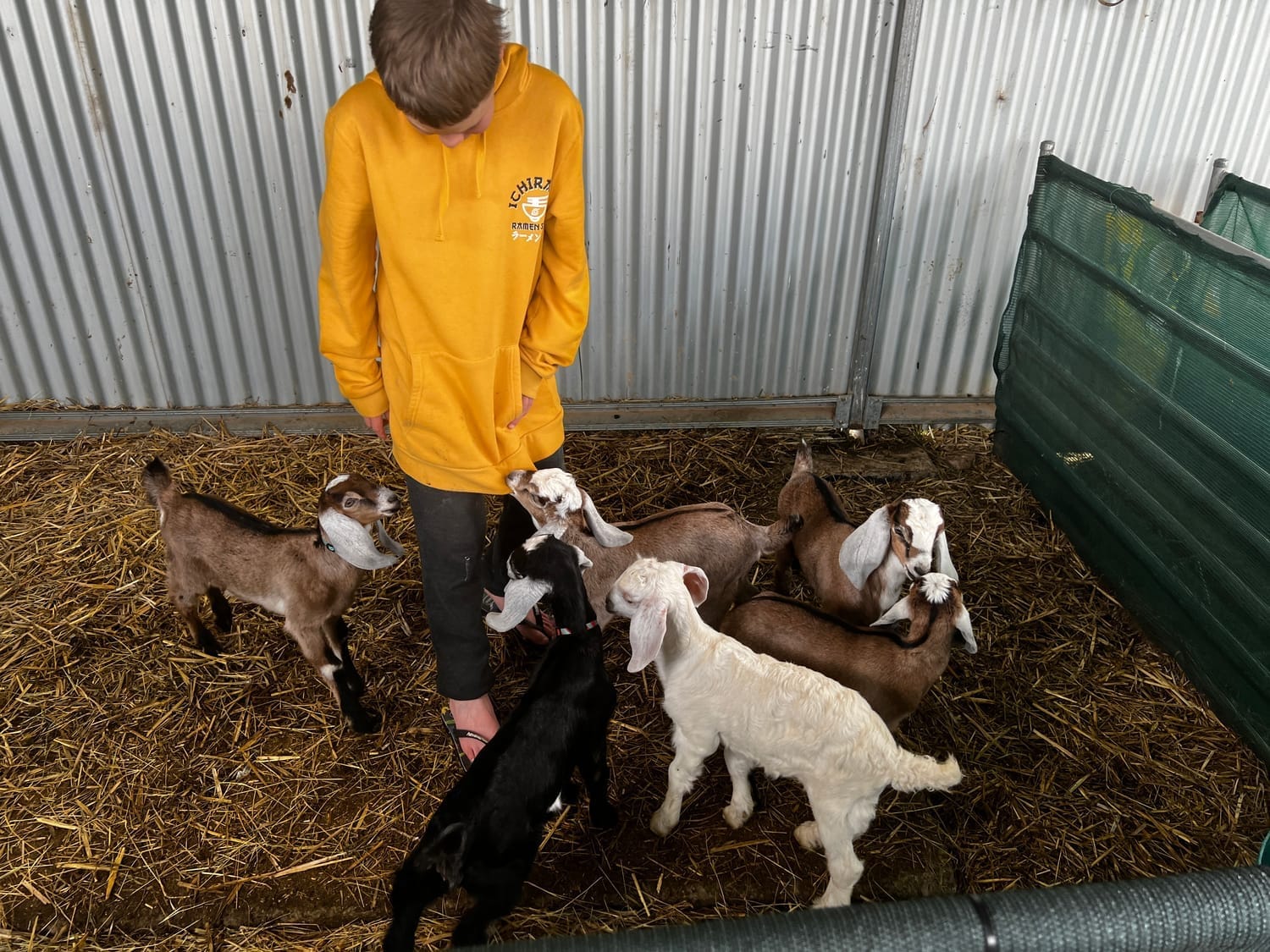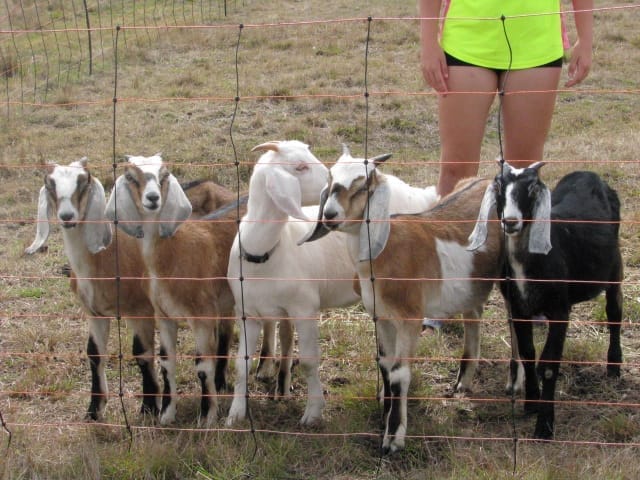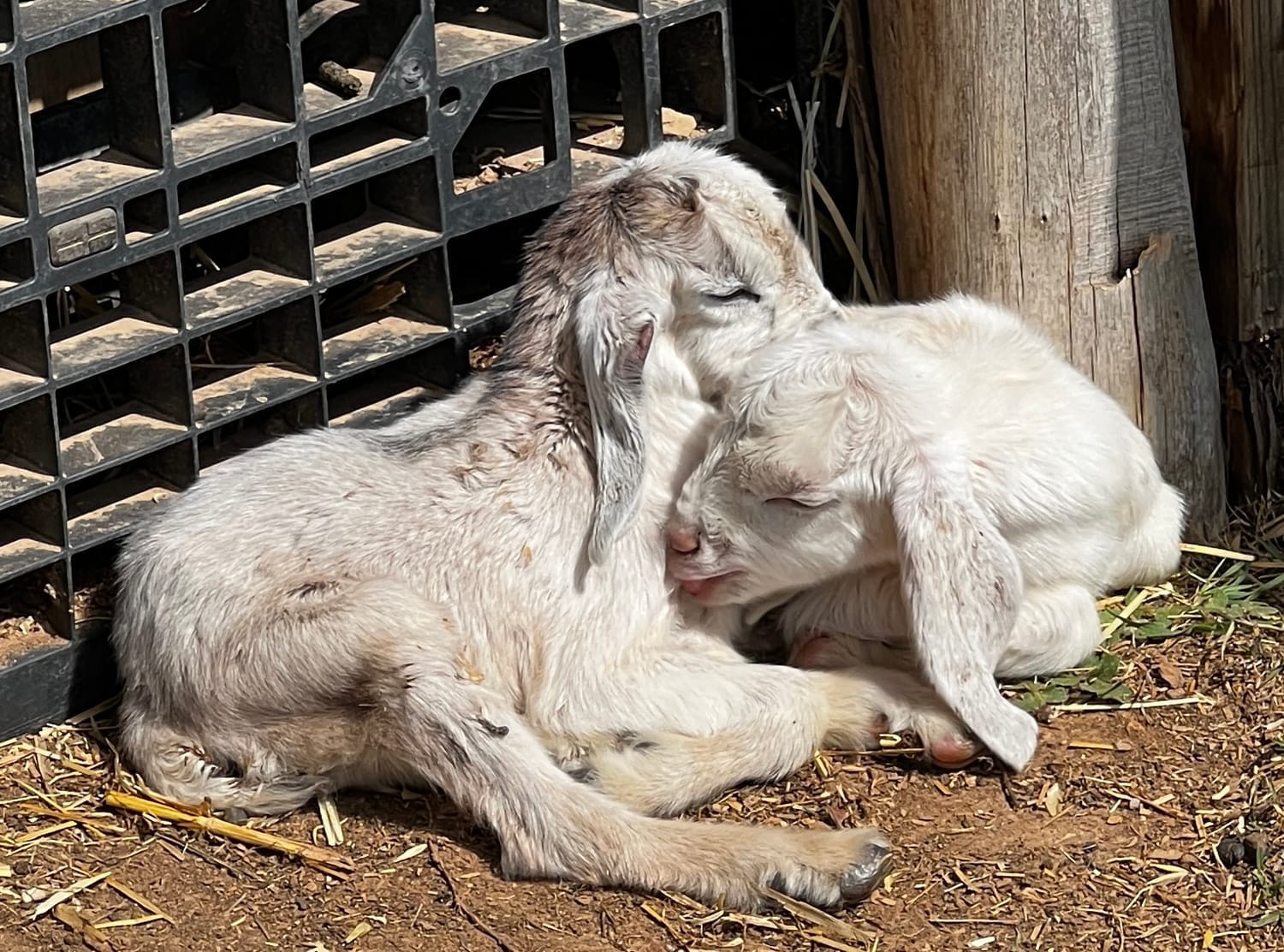
Bottle Raised Kids
The Pro's and Con's of Bottle Raising Kids
Raising goat kids can be a heartwarming yet demanding venture, especially when you bottle-feed them.
In this blog post, we'll explore the ins and outs of bottle raising kids, weighing the joys against the challenges.
Whether you're new to homesteading or seasoned in goat breeding, understanding these aspects will help you make an informed choice. From the bond you build to the commitment it requires, let's dive into the world of raising goat kids on a bottle.
For more detailed information on bottle feeding goat kids, check out this helpful resource: https://www.theprairiehomestead.com/2013/10/dam-raised-goats.html.
Pros and Cons of Bottle Raising Kids

Bottle raising goat kids has its ups and downs. Let's take a closer look at what's involved in this method of raising young goats.
Understanding Bottle Feeding
Bottle feeding goat kids involves providing milk or milk replacer through a bottle instead of allowing them to nurse from their mother. This method is often used when the mother can't produce enough milk, rejects her kids, or passes away.
Bottle feeding requires careful attention to detail. You'll need to prepare the right amount of milk, warm it to the correct temperature, and feed the kids on a regular schedule. It's a hands-on approach that can be rewarding but also time-consuming.
One benefit of bottle feeding is that you can control exactly how much each kid is eating. This can be helpful for ensuring proper nutrition, especially for weaker or smaller kids. However, it also means you're taking on the full responsibility of the kid's nutrition.
Time and Commitment Needed
Bottle raising goat kids is a significant time commitment. In the early weeks, kids need to be fed every few hours, even through the night. This can be exhausting, especially if you're juggling other homesteading tasks or a day job.
As the kids grow, the feeding schedule becomes less demanding, but you'll still need to stick to a consistent routine. This might mean adjusting your daily schedule or finding someone to help with feedings when you're away.
The upside is that this time spent feeding creates a strong bond between you and the kids. They'll come to see you as their source of food and comfort, which can make them easier to handle as they grow. But remember, they're still livestock, not pets.
Reasons for Bottle Raising Goats

There are several situations where bottle raising might be necessary or preferable. Let's explore some of these reasons.
Health and Safety Concerns
Sometimes, bottle raising is a matter of health and safety. If a mother goat is ill or passes away, bottle feeding becomes necessary for the survival of her kids.
In other cases, a goat might not produce enough milk to feed all her kids, especially with larger litters.
Bottle feeding can also help prevent the spread of certain diseases from mother to kid. This is particularly important in commercial dairy operations where maintaining a disease-free herd is crucial.
However, it's important to note that kids raised on their mothers typically receive important antibodies through colostrum, the first milk. If you're bottle feeding from birth, you'll need to ensure the kids receive colostrum or a suitable replacement within their first 24 hours.
Closer Bond with Humans
One of the main reasons some homesteaders choose to bottle raise kids is to create a closer bond with the goats.
Bottle-fed kids often grow up to be friendlier and more comfortable around humans, which can make them easier to handle for milking or other care tasks.
This closer bond can be especially beneficial if you plan to use your goats for showing or as pack animals. The increased human interaction from an early age can make them more cooperative and easier to train.
However, it's important to maintain boundaries. Overly friendly goats can become pushy or develop undesirable behaviors like jumping on people. Always remember they're livestock, not house pets.
Managing Bottle Fed Goat Kids

Proper management is key to successfully raising bottle-fed goat kids. Let's look at some important aspects of their care.
Feeding Schedules and Techniques
Establishing a consistent feeding schedule is crucial when bottle raising goat kids. Newborns need to be fed every 2-3 hours, gradually decreasing to 3-4 times a day as they grow older.
Always warm the milk to body temperature before feeding. Cold milk can cause digestive issues. Use a clean bottle and nipple for each feeding to prevent bacterial growth.
The formula to calculate how much to feed bottle babies is 10-20% of their body weight divided by the number of feeds per day.
For example a kid that weighs 1900 grams being fed 5 times a day would be fed 76 ml at each feed. This is calculated by the following 20% of 1900 = 380 mls daily and then divided by 5 is 76 mls per feed.
(Weight x 20%)/number of feeds
Feed timings can be 6am, 10am, 2pm, 6pm and 10pm in the first 2 weeks.
Between 2-4 weeks I feed at 5am, 11am, 4pm and 9pm.
Then 4-6 weeks 5am, 12 noon and 7pm, around 6-8 weeks you can move to 6am and 6pm feeds.
As the kids grow, start introducing solid foods like hay and grain. This helps develop their rumen and prepares them for weaning. For more details on feeding schedules, check out this guide: https://pethelpful.com/farm-pets/bottle-baby-goats.
Socialization and Behavior Management
While bottle feeding creates a strong bond with humans, it's important for kids to also socialize with other goats. This helps them develop normal goat behaviors and prevents them from becoming too dependent on humans.
Encourage play and interaction with other kids or gentle adult goats in a safe, supervised setting. This socialization is crucial for their development as herd animals.
Be mindful of behaviors like headbutting. While cute in kids, this can become problematic in adult goats. Discourage this behavior from an early age to prevent issues later on.
Remember, even bottle-fed kids are still goats. They need plenty of outdoor time, space to play and explore, and opportunities to engage in natural goat behaviors. For more tips on managing bottle-fed kids, visit: http://www.quakingcanopyfarm.com/bottle-baby-take-home-notes.
Bottle raising goat kids can be a rewarding experience for homesteaders and goat breeders alike. While it requires significant time and commitment, it can result in friendly, easy-to-handle goats. Whether you choose to bottle raise out of necessity or preference, understanding the pros and cons will help you provide the best care for your goat kids.
BY MOJO HOMESTEAD











